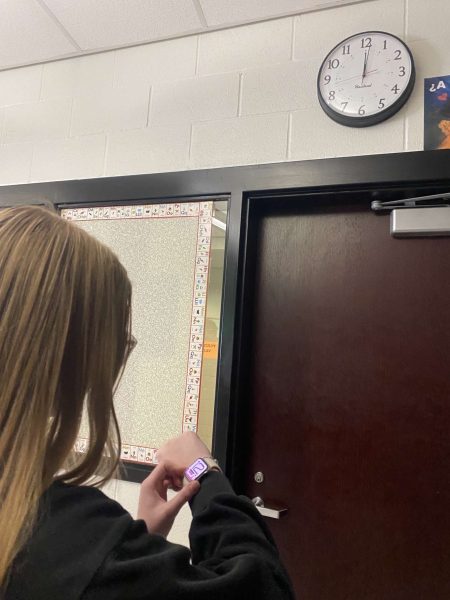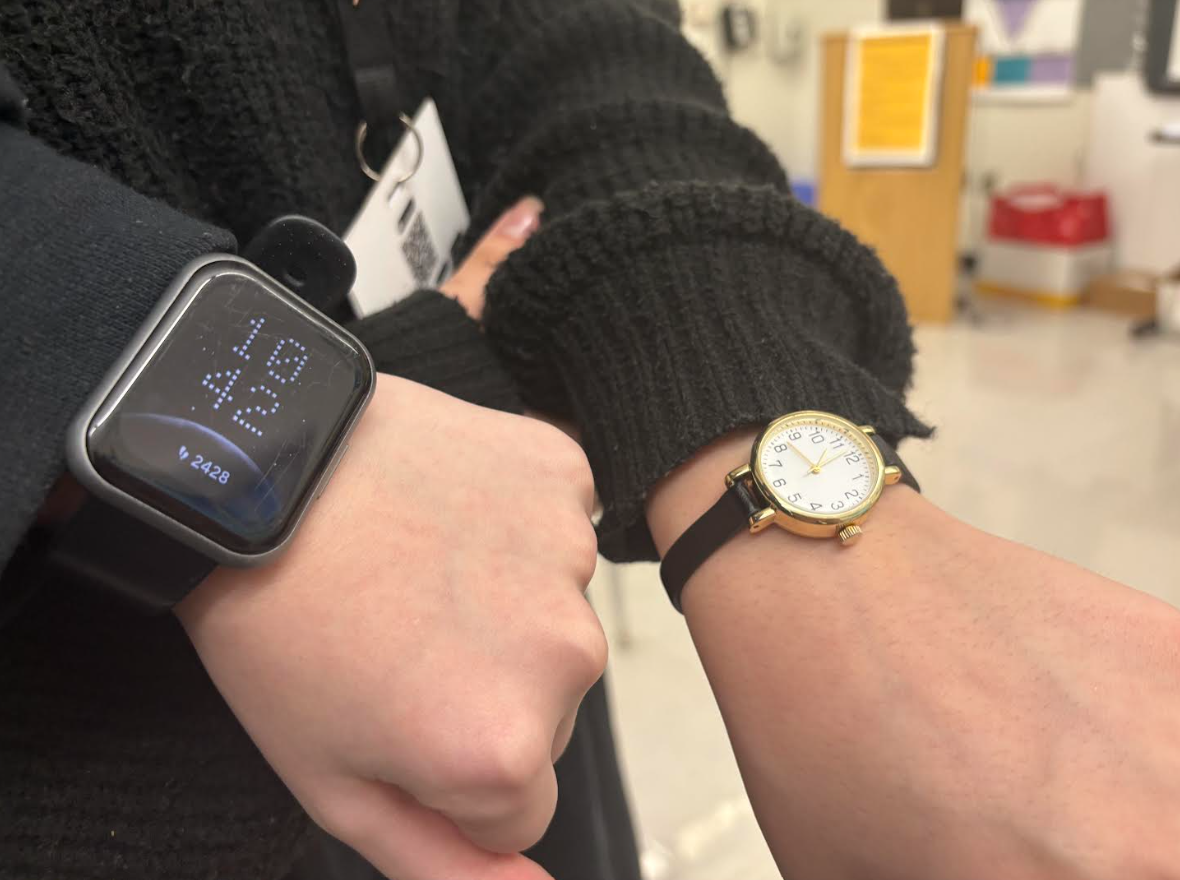The first instinct that comes to mind today when someone asks what the time is, is to check your phone or computer or look up at the digital clock on the wall.
In the 21st century, when technology was developed, digital clocks became more and more popular. Kids are still taught how to read analog clocks, clocks with hands for hours, minutes, and seconds, but teachers fly through the material thinking it isn’t necessary to learn.
With the ability to look at a phone and see the time: Why should it still be important to know how to read an analog clock?
Dedhamcountryday.org writes that analog clocks help kids, especially young students just starting to learn how to add, subtract, multiply, divide, and visualize the math.
By looking at the clock, students can easily learn the multiples of five, 10, 12, 15, 20, and so on. The little notches between the big numbers represent ones, making adding and subtracting simple.
Another difficult concept they can help explain is fractions. Sayings like “a quarter past” and “half past ” can visually explain what was difficult for a second grader to comprehend. Clocks can also be a great way for kids to start prioritizing and planning out little tasks.
Corie DiPaola, ‘27, believes “There is a certain level of incompetence among those who cannot read analog clocks, and among those who taught these lessons poorly.”
DiPaola thinks teachers should spend more time teaching students how to interpret clocks instead of mentioning it once and expecting them to figure it out on their own as they grow older.
Thad Bradley, ‘28, stated his ability to read a clock impacted his math classes since whenever a question in math required reading a clock, he would “get stuck and look in confusion…trying to understand the jumble of numbers.”
Even though he has tried before and still can’t read a clock, he still thinks it’s a beneficial skill to have.
Bradley revealed, “I do think learning how to read a clock is a skill that everyone needs to know, it may be difficult, but please, learning how to read a clock is useful when there’s no digital clocks around.”
A language class might be beneficial if searching for a way to learn. When taking Spanish or French classes at Stroudsburg Junior High School (SJHS) or the Stroudsburg High School (SHS), there is a lesson on reading time in that language.
Edit Lupu, a Spanish teacher at the SHS, commented that it should not be normalized for high school students not to be able to read a clock.
She said, “It’s pretty simple to comprehend – anybody can do it – it’s just the matter of this item being introduced to kids much earlier on and then sticking to it. I think out of the entire class [Spanish One], maybe 10 percent know how to read it, and we have this difficulty even when kids are trying to use the restroom and they have to sometimes sign out and they’re looking at the time and they’re like: ‘I don’t know what time that is.’”
Students try to play it off by looking at the bottom right corners of their Chromebooks for the time or even more accessible; their phones.
Jessica Appolo, an English and Journalism teacher at the SHS, recollected the times when the school used sign-out sheets instead of the SmartPass program implemented in the 2023-2024 school year. She remembered how much of a problem it was for kids to look at the analog clock in the room and see what time they were leaving the classroom.

Almost everyone who signed out looked at their phones, and with SmartPass now, the urgency and importance of learning how to read the clock is disappearing. When a computer can schedule the pass, input the time, and even tell what time it will end, kids do not see the point in learning such a basic skill.
A poll on Instagram revealed that out of 66 students, 93 percent can read an analog clock and seven percent cannot.
This information contradicts how teachers view this subject since out of four teachers, two of them state they do not believe the majority of their class can read a clock.
Jennifer Batt, an English and Drama teacher who teaches at SHS, stated that she believed a majority of her class could read an analog clock; however, an “embarrassingly high number of students probably could not.”
In case someone still has trouble learning how to read a clock or believes it is too late to ask someone for help, one student found that buying an analog watch can be a perfect solution to teach yourself.
Olivia Celano, ’25, explained that she never learned to read a clock when she was young because her teacher got frustrated while teaching her class.
She stated, “I learned how to read an analog clock this year because I got an analog watch because of the aesthetic and because we can’t use our phones in classes. I could only estimate time while looking at a clock and I’m still not very good at reading analog clocks, but I’m getting better and more precise. Follow your dreams anything is possible!”




